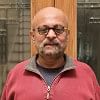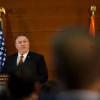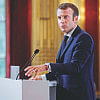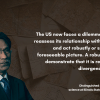Living on the bridge: My life between East and West

I have just crossed a milestone.
We often treat milestone birthdays like thresholds. For some, they're cliffs. For others, peaks. For me, it feels like a bridge—not one I've simply crossed, but one I've lived on. A bridge I've helped build, paused to watch, and rebuilt again.
I was born in Bangladesh, a place defined not just by geography but by rhythm. A place where reality isn't declared but gestured towards, where conversation is circular and layered, and where silence often speaks louder than logic. I lived there for the first 24 years of my life. Then I came to the US—a nation defined by motion and self-determination, by precision and proclamation, by the pursuit of answers in the language of science and systems.
I've now spent over 40 years in the US—that's two-thirds of my life.
But I've never fully left either place. Nor have I ever fully belonged to either. Instead, I've done something stranger and harder to explain. I've tried to build a third space, one that holds the ambiguity of the East and the algorithm of the West. Where the poetics of context meet the precision of consequence. A space not of fusion, but of friction—where meaning needs to be created, not inherited.
Act I: Growing up with social facts (0-24)
In Bangladesh, I inherited a world where identity was not something you thought about but something you carried. Culture, family, traditions, Ekushey Boi Mela, or Pohela Boishakh didn't ask for definition; they asked for reverence. Memories linger of animated debates, where politics and poetry blended seamlessly into the endless adda of my youth. I spent countless evenings in heated debates at the university dorms, marched passionately for causes that shaped our generation, and immersed myself in organising cultural events that echoed far beyond the university gates. Knowledge lived in people, not on platforms. Meaning was indirect, nested inside parables, proverbs, and pauses. From this, I learned to read beneath the surface. I learned that context isn't noise; it's the code. I was living in a world filled with social facts.
Act II: Learning to live with scientific facts (25-45)
Coming to America, I was dropped into a world where clarity wasn't just valued—it was the currency. To be taken seriously, I learned to be precise. I learned to show and tell. I adopted the language of scientific methods, systems thinking, and clarity of communication. It was a world filled with scientific facts. And yet, a part of me still trusted intuition more than evidence. Like many immigrants, I succeeded in translation—but over time, I began to feel stuck in it.
Act III: Synthesising social and scientific facts (45-65)
I began to reflect—not from nostalgia, but to find a synthesis. I stopped seeing East and West as two worlds and began seeing them as two incomplete grammars of life. I didn't want to choose. I wanted to converse. I didn't want to merge. I wanted to mediate.
What emerged from this is my ongoing work I call Engineering Diplomacy: an attempt to resolve complex problems by holding both precision and paradox, design and dialogue, scientific and social facts, in pursuit of desirable outcomes.
Dialogues across time: Four thinkers, one bridge
It's tempting to think we are unique. And while our stories may be unique, our struggles often echo others'. If I look at the thinkers who've most shaped and mirrored my evolution, I find myself in conversation with four radically different minds:
Jiddu Krishnamurti taught me that liberation comes not through knowledge, but from the dissolution of the knower. He showed me that insight often arrives through confrontational introspection. His Eastern radicalism challenged my impulse to codify.
Daniel Kahneman reminded me that even our most reasoned minds are riddled with cognitive blind spots. He made me more cautious about scientific certainty. His Western empiricism exposed the limits of scientific knowledge.
Edward Said modelled the power of living in-between. He understood that exile could be intellectual as well as geographic. He wrote not to reconcile East and West, but to hold them in tension long enough for their dissonance to speak.
Seyyed Hossein Nasr reminded me that the most enduring forms of knowledge are not only empirical or introspective, but metaphysical. He taught me that reality is not merely discovered—it is received, cultivated, and lived. While Krishnamurti dismantled the ego, Kahneman mapped our cognitive flaws, Said revealed how knowledge is shaped by power and politics, and Nasr reminded me that knowledge cannot be separated from the sacred and that science is only one expression of a much wider cosmological grammar. His writings gave shape to the spiritual intuitions I carried from my early life in Bangladesh but seldom foregrounded in my intellectual work.
Each of these thinkers taught me "how to think," not "what to think." But none of them gave me a map. Because the map may not exist. What exists is learning by doing. The stitching together. The refusal to reduce. The ability to think again. The art and science of Engineering Diplomacy.
My life on the bridge
Over the last four decades in the US, I built a career that has been both fulfilling and formative. I've taught at world-class institutions, developed frameworks for engineering diplomacy, mentored students who now shape science, policy, and research around the globe, and engaged in complex problem-solving at the intersection of science, engineering, and public decision-making. From academic conferences to international negotiations, I've worked to translate ambiguity into action—not just by building models, but by building conversations. My work has always aimed to be principled, pragmatic, and impactful.
I've also worked on projects in Bangladesh for decades—from addressing arsenic contamination to advising on cholera interventions, from building frameworks for water diplomacy to writing critically during the recent uprising. I've contributed knowledge, models, and ideas that I believe mattered.
And yet, I never went back to Bangladesh.
Not to live. Not to organise on the ground. Not to be shoulder-to-shoulder with those who faced tear gas and tyranny.
I wrote. I hypothesised. I analysed. From a distance.
There's a name for that in Bangladesh—shiter pakhee. A winter bird. One who returns only when it's convenient, when the conditions are right.
And while I resist that label, I can't fully reject it. I've felt the weight of it. I've asked myself: Did I build bridges only where I could remain dry?
The reality is more complicated. I stayed here to protect my career, to support my family, and to preserve a sense of internal coherence. But part of me still wonders, from this vantage of privilege, what might have emerged had I chosen to stand physically present, shoulder-to-shoulder with those organising, protesting, and rebuilding Bangladesh? Would the reality of living in Bangladesh have taught me something that perspective, no matter how thoughtful or strategic, never could?
This, too, is part of living on the bridge. Not all distances are measured in miles. Some are measured in what we withhold to maintain coherence. Or comfort. Or control.
What I've learned from living on the bridge
If there's one pattern I've had to unlearn, it's the instinct to "think always like an engineer"—to make everything digestible, explainable, and doable. And if there's one pattern I've tried to cultivate, it's the ability to sit with an idea, or a person, without rushing to resolve it. To stay present even when things are unresolved, unfinished, or unspoken.
Living on the bridge is lonely, sometimes. It's hard to explain your home when your home is the space between two shores. People ask you which side you're on, what you left behind, what you've claimed. But the reality is: I never left or arrived. I just built a life that didn't fit the map.
Yet this in-between space that I've been living in has given me something rare. Not certainty. Not closure. But conversation. Practice. Presence. And perhaps most important of all: a glimpse of something deeper than synthesis—a kind of wisdom that connects understanding to reverence and meaning to something greater than utility.
This is the life I continue to build, mindful of my privilege yet committed to dialogue and understanding. I warmly invite you, particularly those navigating similar bridges between worlds, to share your stories of belonging, struggle, and insight.
Shafiqul Islam is director of Water Diplomacy, professor of civil and environmental engineering and water diplomacy at the Fletcher School of Law and Diplomacy at Tufts University, US.
Views expressed in this article are the author's own.
Follow The Daily Star Opinion on Facebook for the latest opinions, commentaries and analyses by experts and professionals. To contribute your article or letter to The Daily Star Opinion, see our guidelines for submission.

 For all latest news, follow The Daily Star's Google News channel.
For all latest news, follow The Daily Star's Google News channel. 








Comments